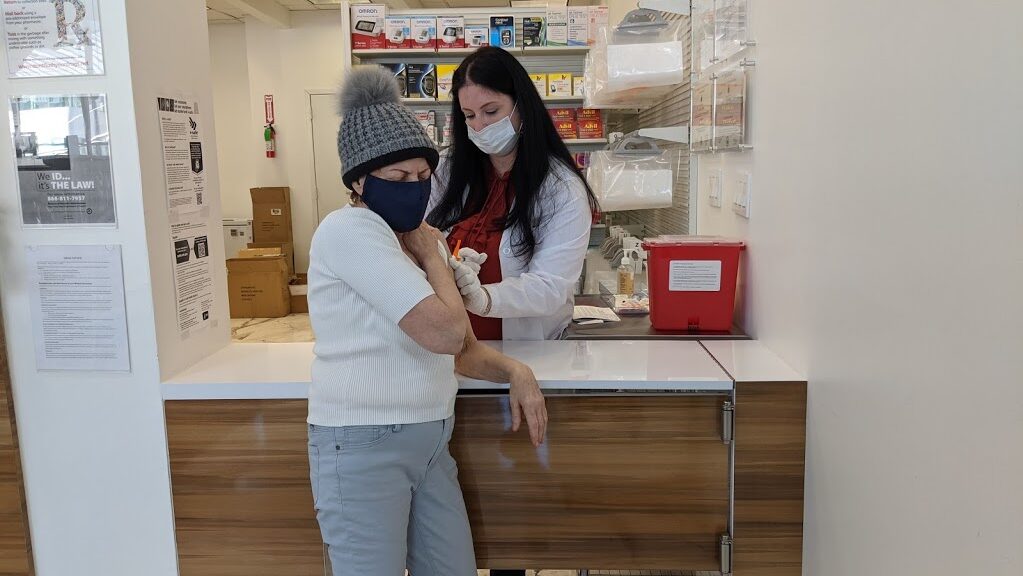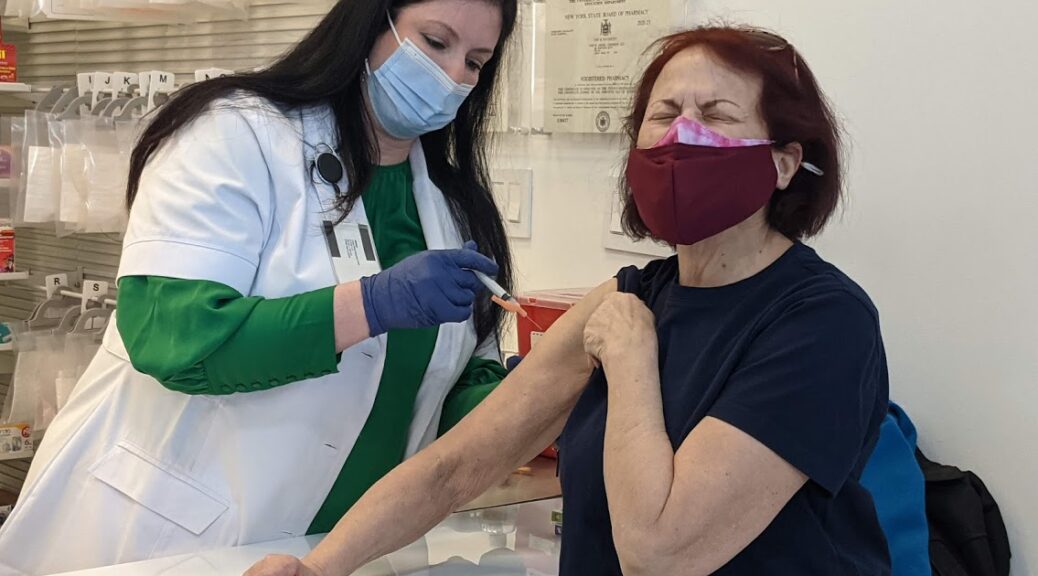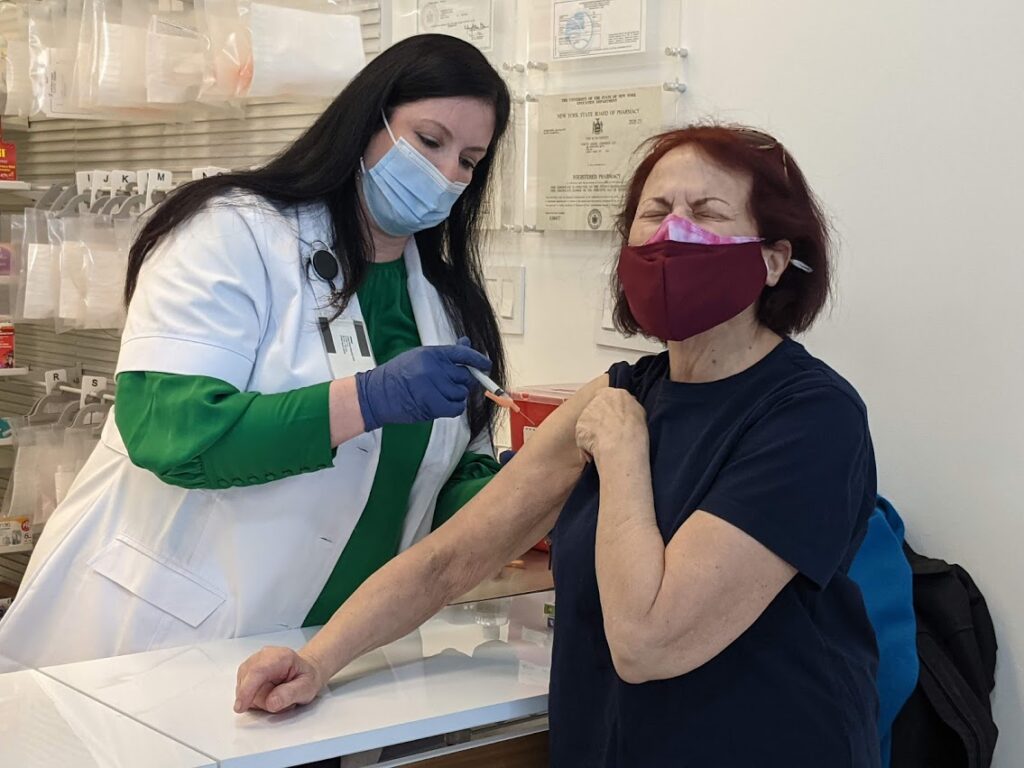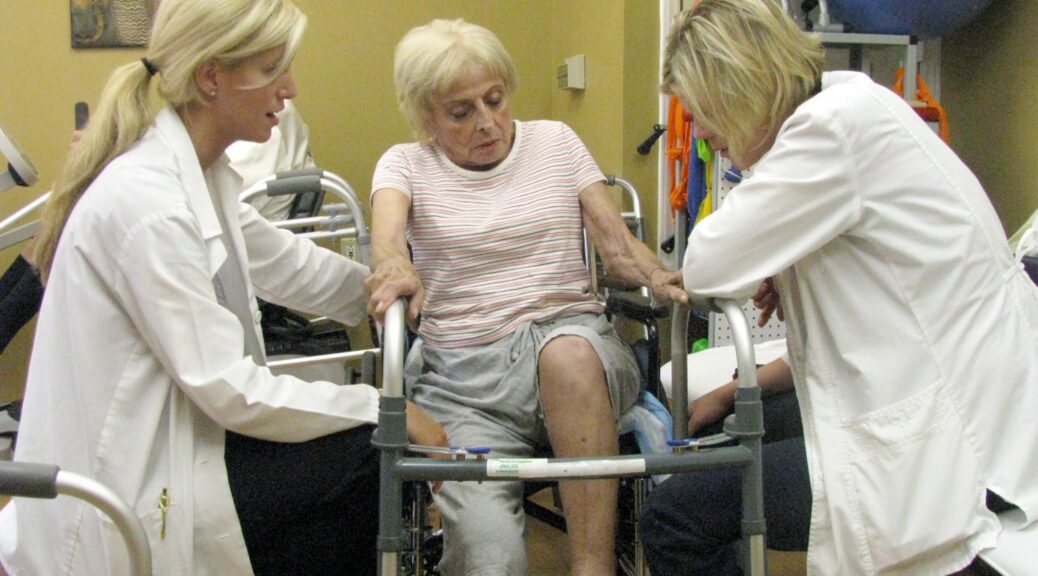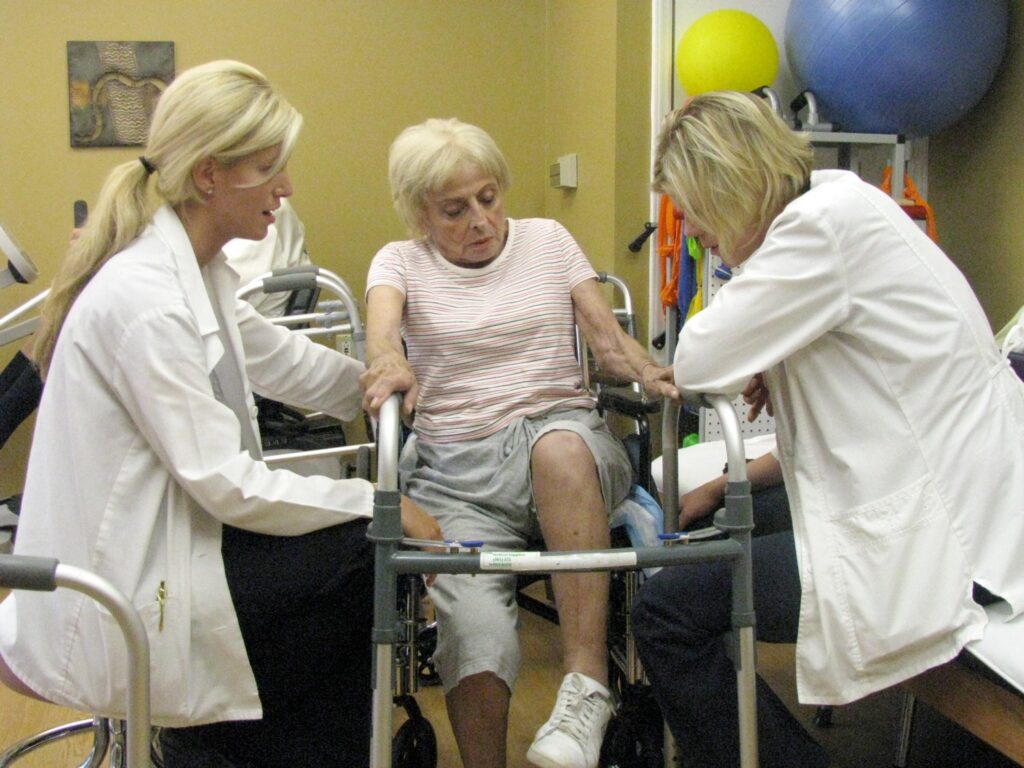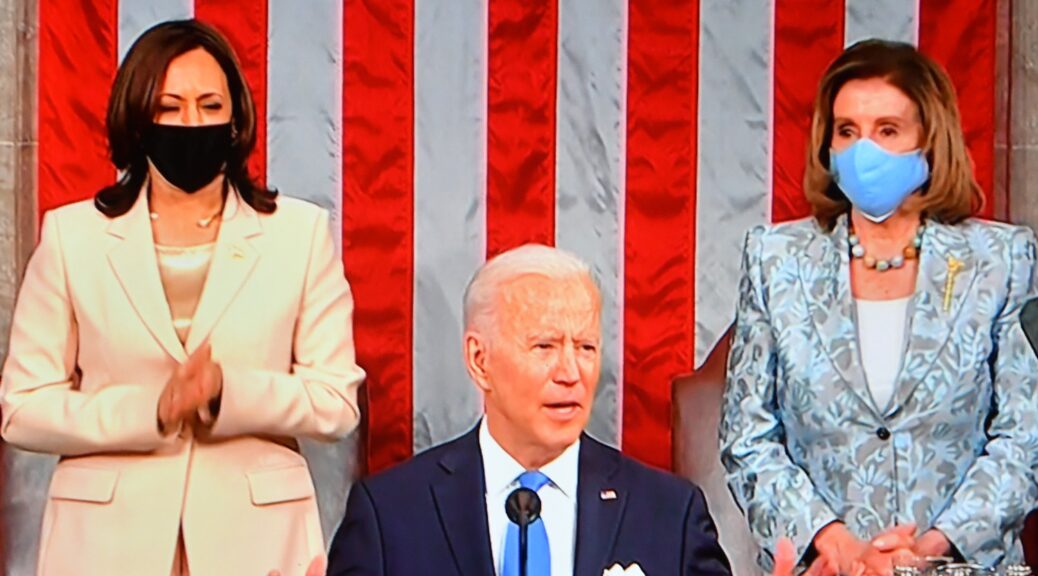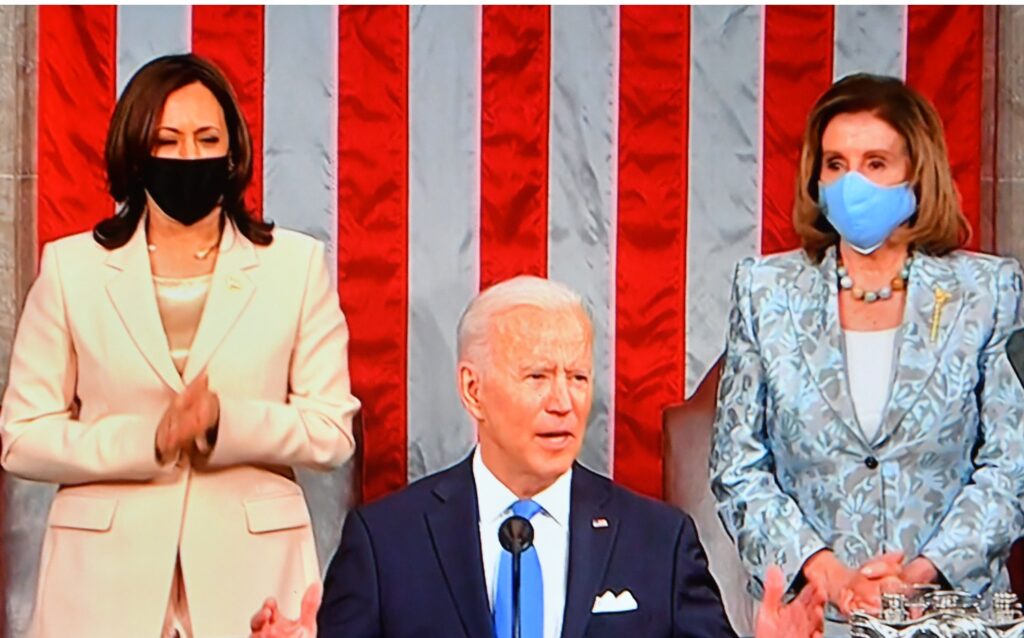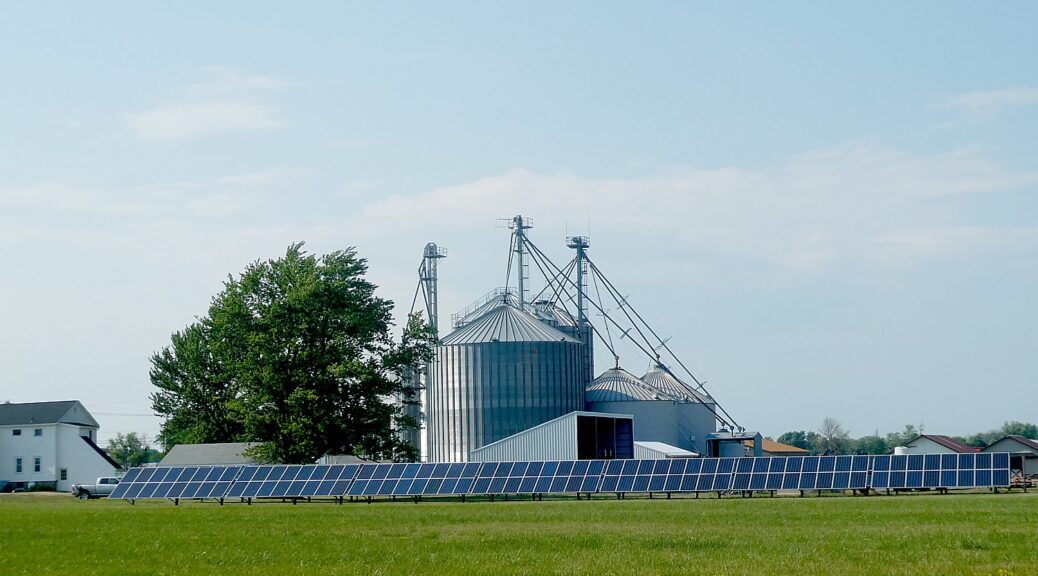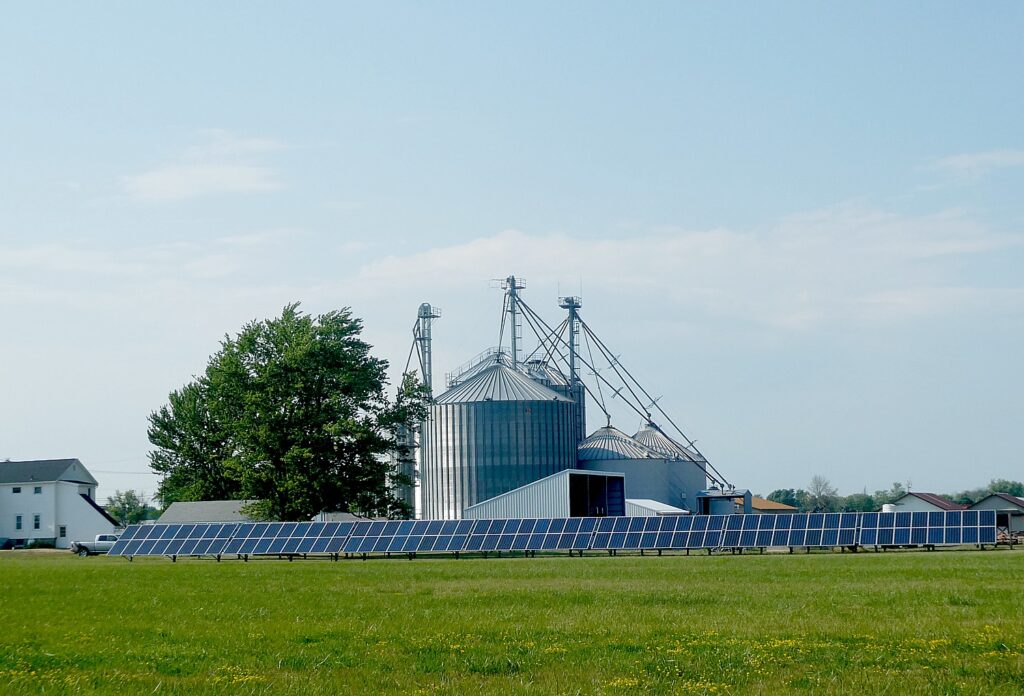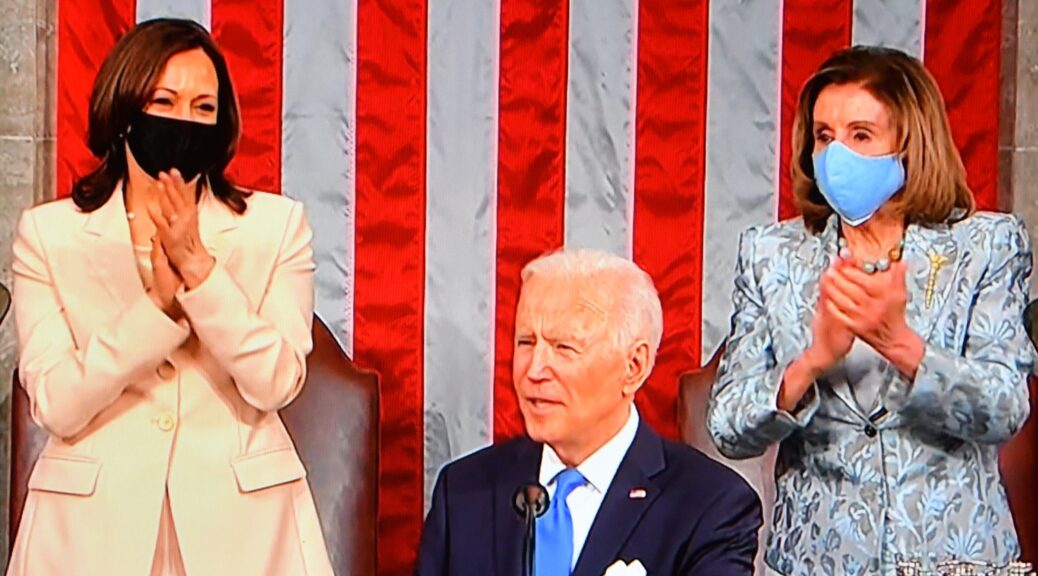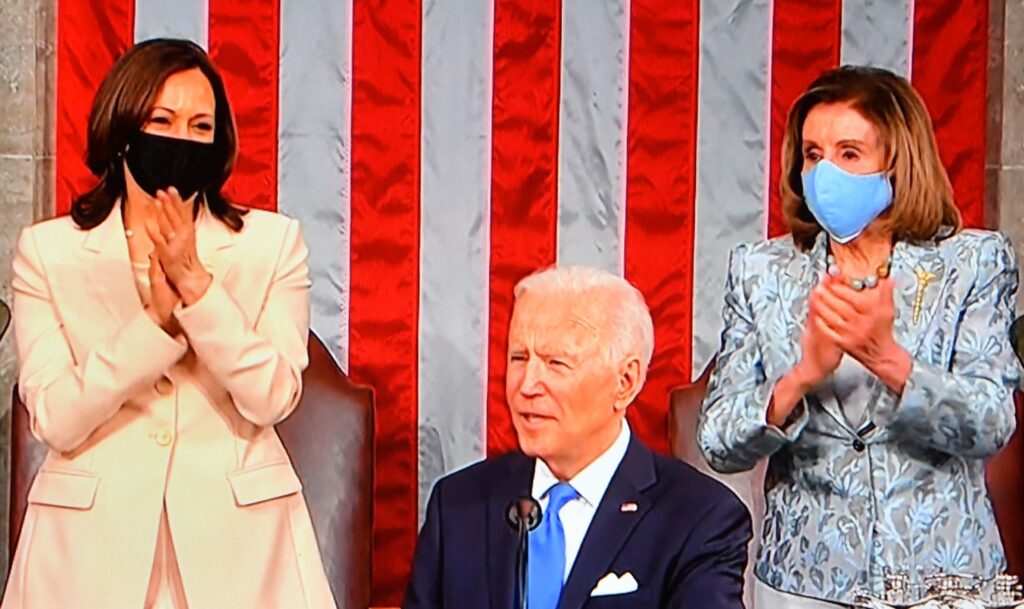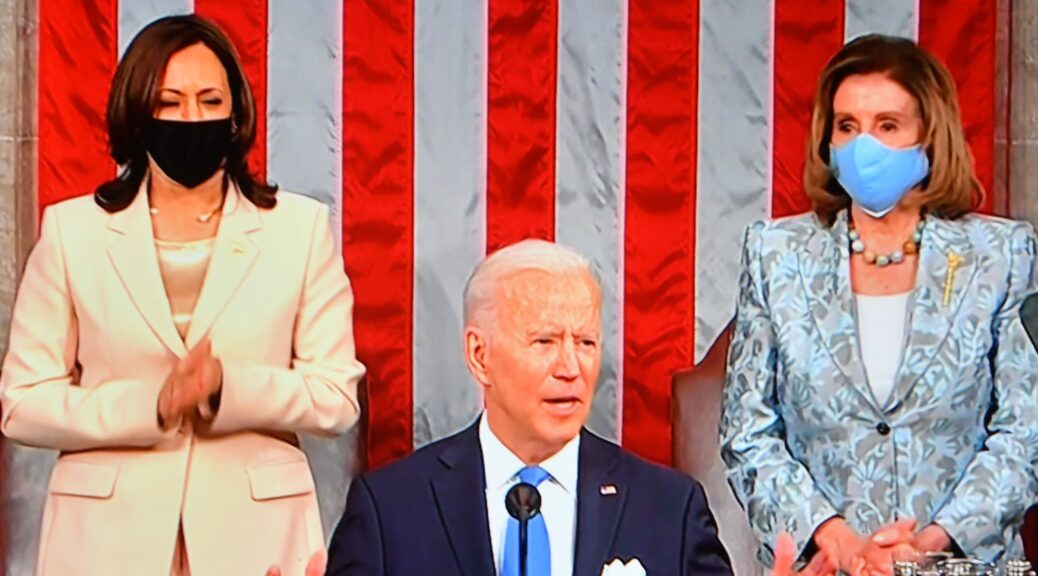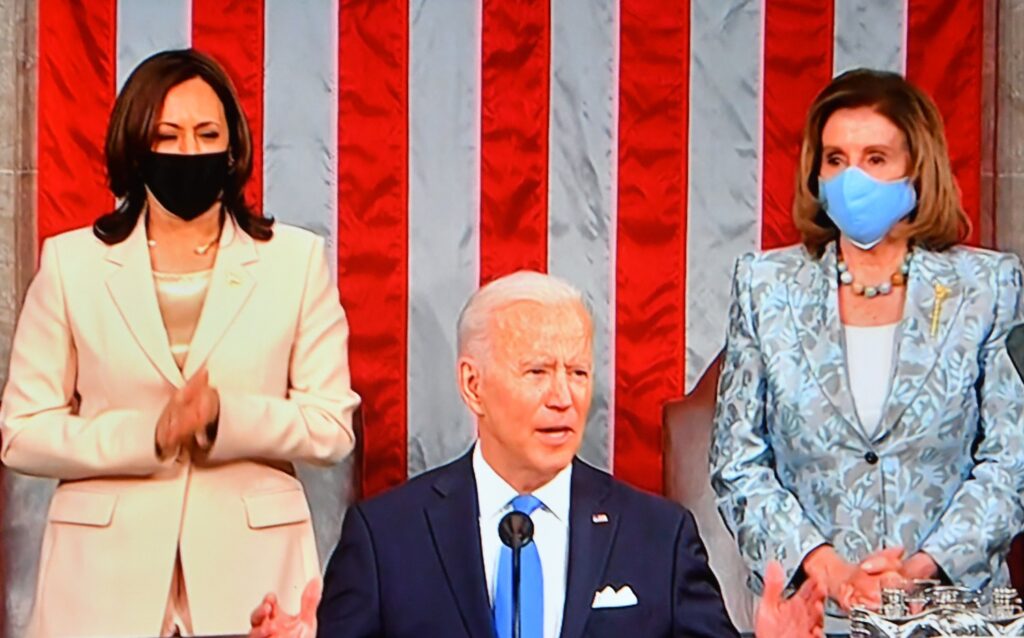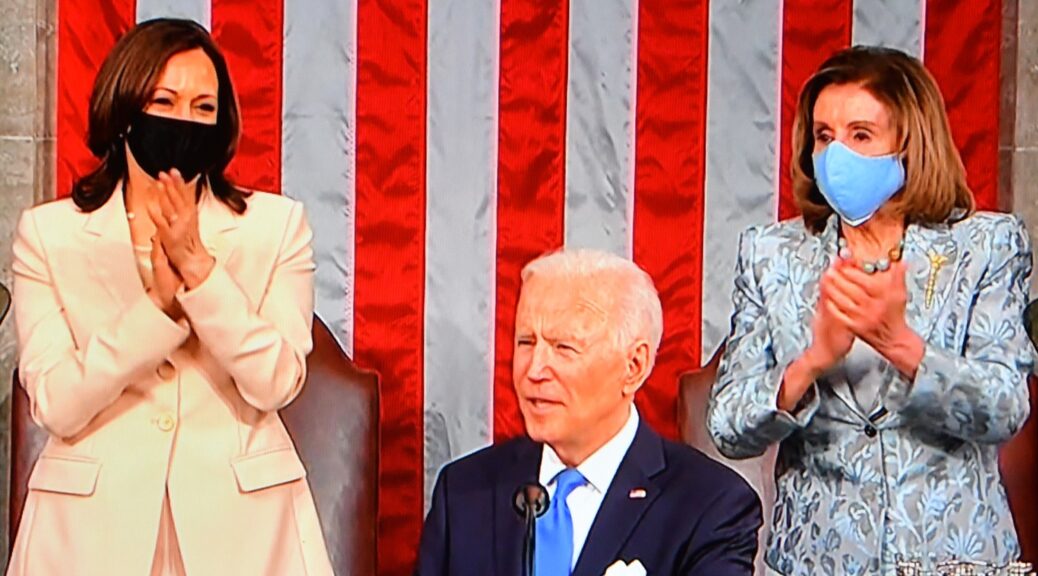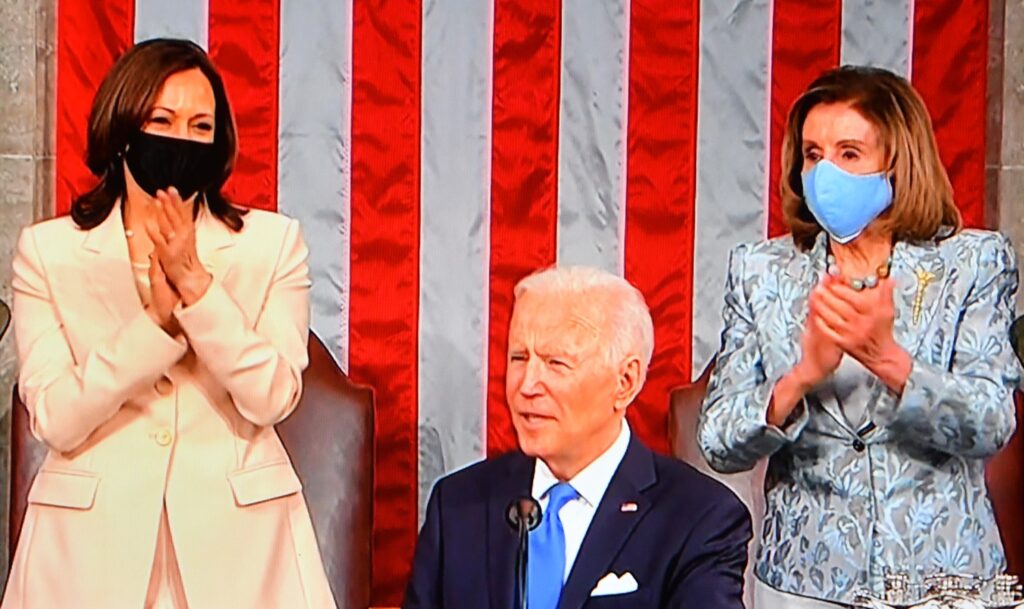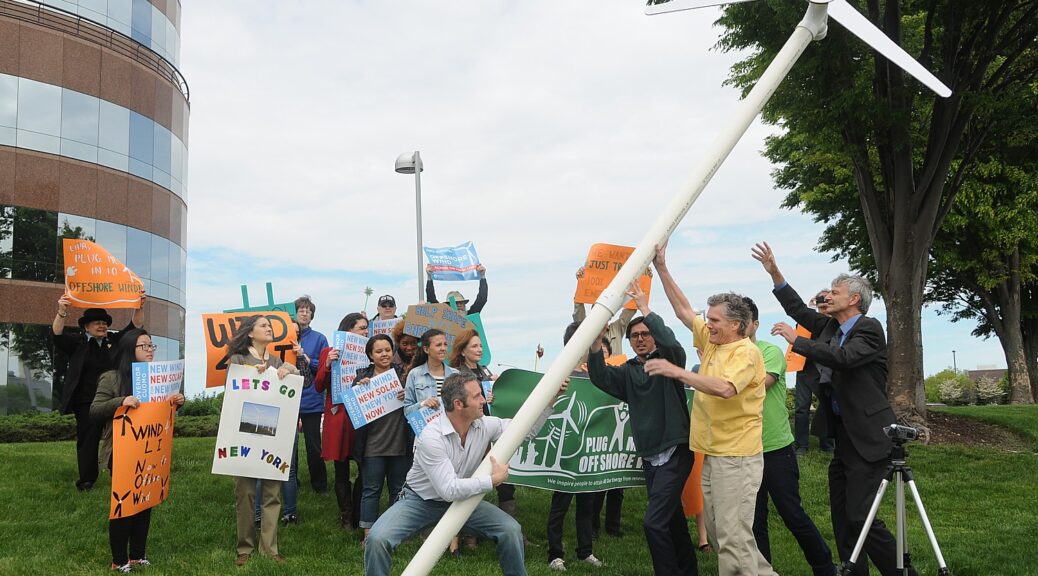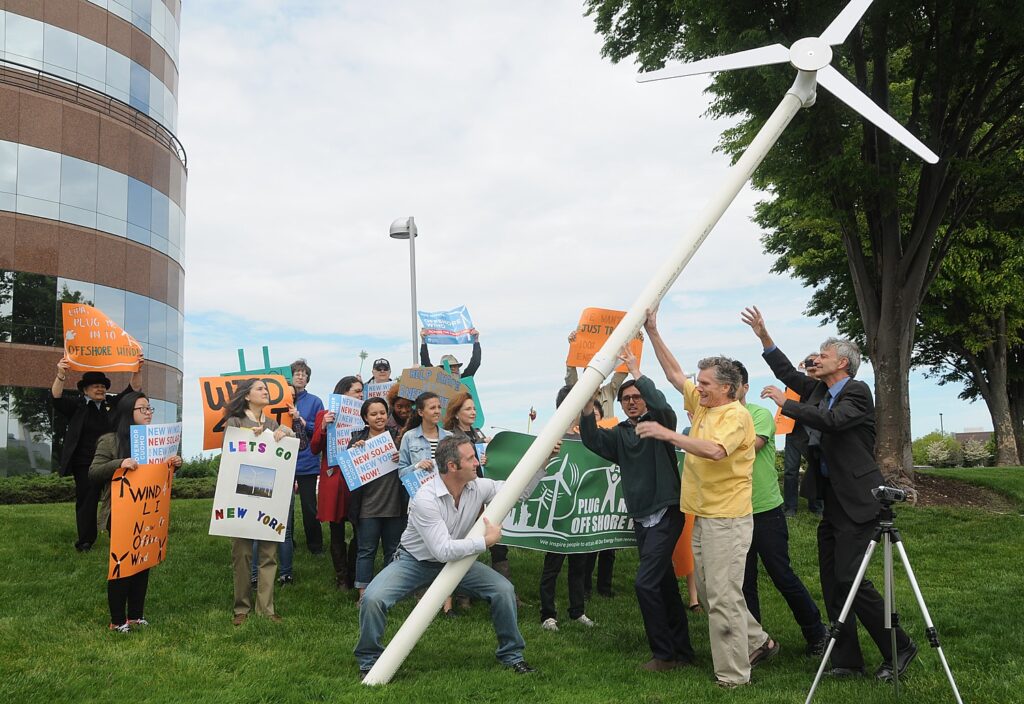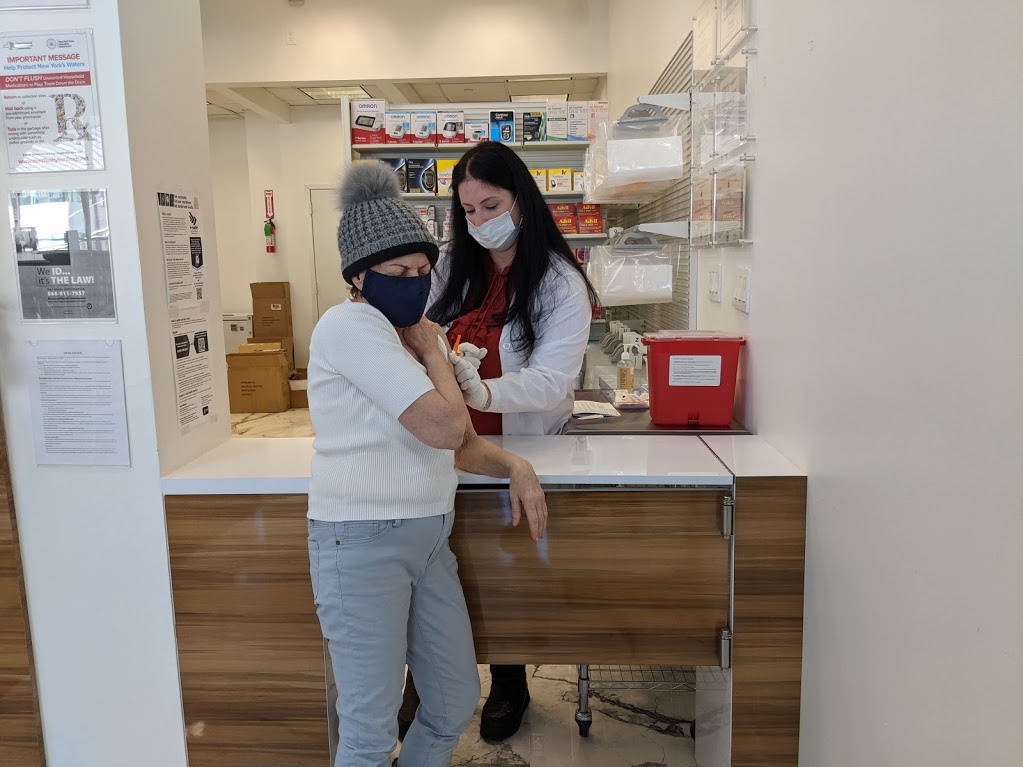
The White House released an Executive Summary of the Biden Administration’s National COVID-19 Preparedness Plan:
Our country needed an emergency response that was worthy of the crisis we faced. A response that would leave no stone unturned, that would leverage the full force of the federal government, the innovation of the private sector, and the determination of the American people. On President Biden’s first full day in office, he released the first-ever comprehensive National Strategy for the COVID-19 Response. This strategy focused on building a response to this virus that would give people the tools they needed to protect themselves, reopen our schools, and get our economy moving again.
The U.S. government has spent the last year executing on that strategy. To get this country moving in the right direction, we worked hand-in-hand with doctors, nurses, businesses, unions, community organizations, governors, mayors, and citizens across every state, Tribe, and territory.
As a result, today, 215 million people are fully vaccinated and two-thirds of eligible adults have gotten their booster shot. We have multiple treatment options, including life-saving pills, and continue to fill the nation’s medicine cabinet. Testing capacity has dramatically increased and we have plenty of free, high-quality masks available to the American people. Schools are open and the economy is experiencing the fastest economic growth in four decades.
America must maintain the tools – vaccines, boosters, treatments, tests, and masks – to protect against COVID-19 and dramatically decrease the risk of the most severe outcomes. We must be prepared to respond to a new variant quickly and keep our schools and businesses open.
Today, the U.S. government is releasing an update to our National Strategy – the National COVID-19 Preparedness Plan – which will help move America forward safely. This plan lays out the roadmap to help us fight COVID-19 in the future as we move America from crisis to a time when COVID-19 does not disrupt our daily lives and is something we prevent, protect against, and treat. We look to a future when Americans no longer fear lockdowns, shutdowns, and our kids not going to school. It’s a future when the country relies on the powerful layers of protection we have built and invests in the next generation of tools to stay ahead of this virus.
The National COVID-19 Preparedness Plan is clear-eyed that new variants might arise. And with the support of Congress, it outlines a plan to ensure that vaccines, tests, and treatments can be updated and deployed quickly to protect against a new variant.
Make no mistake, President Biden will not accept just “living with COVID” any more than we accept “living with” cancer, Alzheimer’s, or AIDS. We will continue our work to stop the spread of the virus, blunt its impact on those who get infected, and deploy new treatments to dramatically reduce the occurrence of severe COVID-19 disease and deaths.
We are not going to just “live with COVID.” Because of our work, we are no longer going to let COVID-19 dictate how we live.
To fully execute on this plan requires Congress doing its part to invest in tools that work. Additional funding will be necessary to provide critical treatments like pills and monoclonal antibodies; to make further investments to shore up America’s testing supply; to provide resources that guard against and prepare for new variants; and to continue to fight this virus abroad. Without these investments, many of the activities described below cannot be initiated or sustained.
America has made strong progress in our fight against the COVID-19 pandemic. Congress providing the resources needed to execute this plan will be critical to getting America back to our normal routines while protecting people from COVID-19, preparing for new variants, and preventing economic and educational shutdowns. Because of our work over the last two years, we can begin to move forward safely.
The President’s National COVID-19 Preparedness Plan focuses on four key goals:
- Protect against and treat COVID-19
- Prepare for new variants
- Prevent economic and educational shutdowns
- Continue to lead the effort to vaccinate the world and save lives
1: Protect against and treat COVID-19
The United States has experienced five waves of the pandemic since 2020, including three in the past year that were driven by new variants. America experienced a wave of COVID-19 cases driven by the Alpha variant in early Spring 2021 – a time when the U.S. vaccination program was administering a record number of vaccines every day. The Delta variant, which was more than twice as contagious as the original coronavirus strain, then swept across the country starting in Summer 2021, beginning in the South and spreading to the Midwest and Rocky Mountain regions.
Omicron represented another step in the virus’s evolution, and has been one of the most contagious viruses in history, causing record numbers of infections around the world over the past three months. However, because of both lower severity of the Omicron variant and a stronger level of population immunity from vaccinations, Omicron has caused relatively fewer cases of severe COVID-19. Compared to prior waves of COVID-19 in the United States, the Omicron wave has had a lower proportion of cases resulting in hospitalization or death.
America has weathered the current Omicron wave with minimal disruption – schools and businesses largely remained open. As the country emerges from the Omicron wave,our path forward relies on maintaining and continually enhancing the numerous tools we now have to protect ourselves and our loved ones – from vaccines, to tests, to treatments, to masks, and more.
In January 2021, Americans had very few tools to protect against COVID-19, and the tools we did have were in limited supply. Over the last year, together, with states, localities, and public and private partners, the Administration has mobilized an unprecedented, whole-of-society effort to give Americans the tools they need to protect themselves.
The Administration has put vaccines at the center of our COVID-19 response because vaccines are the best tool we have to prevent hospitalization and death. We stood up the largest free vaccination program in our country’s history – mobilizing 90,000 vaccination locations, standing up dozens of federally-run mass vaccination sites with the ability to administer more than a combined 125,000 shots a day, and deploying over 9,000 federal personnel to support vaccinations nationwide – including over 5,000 active duty troops.
As a result, today, the vast majority of Americans have the protection of a vaccine – with 215 million Americans fully vaccinated, and an estimated two-thirds of eligible adults having received their booster shot. Vaccinated and boosted people are 41 times less like to die of COVID-19 than unvaccinated individuals. And America’s unprecedented vaccination campaign has saved lives: a December 2021 estimate suggested that vaccines saved over 1 million American lives and successfully prevented over 10 million hospitalizations.
The Administration has also expedited the development, manufacturing, and procurement of COVID-19 treatments, building a diverse medicine cabinet filled with more treatments now than at any point in the pandemic. Today about 4 million treatment courses are available to Americans, with 1 million additional courses of the Pfizer antiviral available in March, and another 2.5 million additional courses of the Pfizer antiviral available in April. In total, we have secured 20 million courses of Pfizer’s life-saving antiviral pills, which have been shown to reduce the risk of hospitalization or death by 89%.
The nation’s testing supply has increased dramatically. We now have free testing sites at 21,500 locations around the country. In January 2021, there were no rapid, at-home tests on the market available to Americans; during January 2022, there were more than 480 million at-home tests available to Americans on top of all other testing options. And we stood up COVIDtests.gov so Americans could order tests that shipped directly to their homes — for free. Private insurance and Medicaid now cover rapid at-home tests for free, and Medicare will fully cover these at-home tests starting this spring.
And the U.S. government has successfully put equity at the heart of a nationwide public health response. Hispanic, Black, and Asian adults are now vaccinated at the same rates as White adults. This is the result of an all-of-society effort that got America to where it is today: employers who offered paid time off for their employees; child care providers who offered drop-in services for caregivers to get vaccinated; public transit authorities and ride-sharing companies that provided free rides to vaccination sites; churches, civic organizations, barbershops, and beauty salons, who opened their doors to be trusted spaces for vaccinations; and the families who made vaccination a family affair.
The path forward in the fight against COVID-19 is clear: we must maintain and continually enhance the tools we have to protect against and treat COVID-19. The Administration looks forward to working with Congress to ensure that we have the resources to do just that.
Because we have these tools, we can begin to get back to our more normal routines safely and the use of public health mitigation measures like masking can be less frequent. The Centers for Disease Control and Prevention (CDC) has updated its framework for recommendations on preventive measures like masking, so masks are recommended when and where they matter the most and Americans will be wearing masks less often.
Make no mistake, as America moves forward we will leave no one behind. Equity will remain at the very center of our path forward in the fight against COVID-19. And we will be there to support Americans with the long-term impacts of COVID-19, including people experiencing Long COVID or mental and behavioral health challenges; as well as families suffering from the tragedy of losing someone they loved.
The Administration will work with Congress to secure the necessary funding to:
- Launch an effort to vaccinate America’s youngest children as soon as the U.S. Food and Drug Administration (FDA) authorizes and the CDC recommends a vaccine for that age group. If the FDA authorizes and the CDC recommends a vaccine for children under five years of age, the United States is prepared to immediately distribute vaccines through a network of thousands of pediatricians’ offices, children’s hospitals, health centers, and local sites, so that vaccines are made available conveniently to families across the country.
- Ensure that Americans – of all ages – can get the protection of an effective vaccine. The Administration will continue to ensure that all Americans have ready access to free and safe vaccines, because vaccines are the most effective defense against COVID-19. The U.S. Department of Health and Human Services (HHS) will also continue to monitor the efficacy and durability of currently authorized vaccines against current and future variants and make recommendations to optimize protection.
- Increase American manufacturing capacity to reliably produce an additional 1 billion vaccine doses per year – three times the U.S. population – and accelerate research and development of a single COVID vaccine that protects against SARS-CoV-2 and all its variants, as well as previous SARS-origin viruses. To ensure that people stay protected, the U.S. government will continue to use advance purchasing agreements when appropriate and work closely with vaccine manufacturers to produce shots quickly and safely. Fully supporting this effort to scale up domestic vaccine manufacturing will require additional resources from Congress. Additionally, we will maintain a network of tens of thousands of sites to deliver shots to the American people at any time this effort is needed.
- Continue vaccination outreach and education efforts and combat misinformation and disinformation. HHS will continue its work to equip Americans with the tools to identify misinformation and to invest in longer-term efforts to build resilience against health misinformation.
- Ensure there are enough treatments for Americans who need them. The U.S. government will procure additional treatments; continue to use an expedited, streamlined process to review treatments for authorization by the FDA; and accelerate research and development into next generation treatments. These efforts will require additional funding and authorities from Congress.
- Launch a nationwide Test to Treat Initiative so Americans can rapidly access treatment, including by visiting a “one-stop” location to get a free test and free treatment pills. The Administration will put forth new educational efforts for the public and providers so that Americans can rapidly access treatments. The Administration will establish “One-Stop Test to Treat” locations at pharmacy-based clinics, community health centers, Long-Term Care Facilities, and the U.S. Department of Veterans Affairs (VA) facilities across the country. “One-stop” sites will be operational by March.
- Update the framework for recommendations on preventive measures like masking to reflect the current state of the disease. Masks have been a critical tool to protect ourselves, but they have a time and a place. With a broad range of other protective tools in place, the CDC has announced an updated framework for guidance on preventive measures like masking – moving away from simply basing broad recommendations on case counts and test positivity, and instead encouraging prevention measures like masking when they are most needed to minimize severe disease and to keep our hospitals from becoming overwhelmed in times when COVID-19 is surging. By monitoring community risk, masks can be worn when the risk of severe disease in the community is high and taken off when the risk is low. Overall, it means Americans will be wearing masks less because so many people are protected from severe disease.
- Launch a one-stop-shop website that allows Americans to easily find public health guidance based on the COVID-19 risk in their local area and access tools to protect themselves. The Administration will launch a website where Americans can find the level of COVID-19 risk in their community and specific guidance based on that risk. The site will also point people to the tools we now have to fight COVID-19, such as locating a vaccination site in their neighborhood or finding a free high-quality mask at a local grocery store or pharmacy.
- Sustain and increase American manufacturing of COVID-19 tests, so we can continue to have a robust supply of tests. The Administration will continue to use the expedited authorization process to help test manufacturers get tests to market quickly; maintain America’s network of thousands of free testing sites; use the Defense Production Act (DPA) and other authorities, where warranted, to increase manufacturing capacity; and invest in innovation to make tests less expensive. These continued investments in testing will require additional funding from Congress.
- Prioritize protections for immunocompromised people and take new actions to protect individuals with disabilities and older adults. The Administration will continue to provide strong support for the immunocompromised, including providing prioritized access to treatments and preventive interventions – pending additional funding from Congress – as well as ensuring access to boosters. The Administration will also increase equitable access to testing and COVID-19 mitigation resources for people with disabilities and older adults, and engage industry to accelerate research and development of accessible self-tests. Securing sufficient preventive treatments for people who are immunocompromised will require additional funding from Congress.
- Help Americans with the long-term impacts of COVID-19. In recognition of the wide-reaching long-term impacts of COVID-19 on our society, the President will direct the U.S. government toaccelerate efforts to detect, prevent, and treat Long COVID; coordinate efforts to provide support to families who have experienced the COVID-related loss of a loved one; and attend to the mental health and well-being of our communities. The Administration will also propose to make new investments in health care workers to support their mental health and well-being.
- Ensure equitable access to COVID-19 health care and public health resources. The Administration will continue to prioritize providing equitable access to COVID-19 health care and public health resources – including personal protective equipment (PPE), tests, treatments, masks, and vaccines; and address COVID-related health inequities among communities defined by race, ethnicity, geography, disability, sexual orientation, gender identity, and other factors. The U.S. government will support dedicated resources for local community-based organizations, community health centers, and rural health clinics.
As we work to keep ourselves protected against COVID-19, America must remain prepared for any new variant that may come our way. To do so, the Administration has developed a comprehensive plan for how we monitor this virus to stay ahead of it, adapt our tools swiftly to combat a new variant, and deploy emergency resources to help communities.
Before January 2021, the federal government had insufficient data and sequencing capabilities and was ill-equipped to respond to new variants. Electronic case reporting was in place for only a handful of states in 2020 and the country could sequence only 3,000 viral isolates per week. America had no plan for responding to a new variant or standing up comprehensive efforts to respond to a surge in COVID-19 cases.
The Administration has enhanced our collection, production, and analysis of data, and expanded electronic case reporting to all 50 states, Washington D.C., Puerto Rico, and thousands of health care facilities. The CDC now tracks a range of key COVID-19 response metrics including cases, tests, vaccinations, and hospital admissions in real-time. Additionally, the CDC launched – and is continually enhancing – the National Wastewater Surveillance System (NWSS) to track the presence of SARS-COV-2 in wastewater samples collected across the country. And America has established a world-class sequencing operation, sequencing up to 90,000 isolates a week. The CDC’s sequencing efforts can now reliably detect variants that account for as little as 0.1% of all COVID-19 cases circulating in the United States. And when new variants are identified, the federal government has a network of researchers – federal, academic, and commercial – who are able to study the sequence and assess mutations rapidly, allowing the government to respond quickly to concerning variants.
The Administration has also successfully built a robust emergency response infrastructure. Our surge response – led by the Federal Emergency Management Agency (FEMA) and HHS – developed capabilities to stand up over 100 federal mass vaccination sites and federal surge testing sites; distribute millions of critical supplies; and deploy thousands of federal clinical and non-clinical personnel to support states, Tribes, and territories. Since July 2021, the federal government has deployed over 4,000 military and non-military personnel including doctors, nurses, and paramedics; sent over 3,400 ventilators, ambulances, and other critical supplies; and shipped over 115 million pieces of PPE. And over the last year, FEMA has invested $300 million in state hospital preparedness to expand hospital capacity in 38 states.
Moving forward, the Administration will maintain our proven data, sequencing, variant response, and surge response capabilities. The CDC will continue to improve COVID-19 data collection, reporting, and analysis so America is better informed and ready to respond to new variants. And if new variants emerge, the federal government will leverage established playbooks to assess a new variant’s impact on our vaccines, treatments, and tests, and rapidly deploy the tools, personnel, and resources Americans need. America will also retain a significant stockpile of tools to combat COVID-19 that remain ready for deployment.
The Administration will work with Congress to secure the necessary funding to:
- Improve our data collection, sequencing, and wastewater surveillance capabilities to immediately identify and detect new and emerging variants; and strengthen pandemic preparedness. The U.S. government willcontinue improvements to COVID-19 disease and vaccination data collection, wastewater surveillance, and virus sequencing capacity so we are better prepared to respond rapidly to emerging threats. This includes strengthening data infrastructure and interoperability so that more jurisdictions can link case surveillance and hospital data to vaccine data. The Administration is also leveraging COVID-19 response capabilities into stronger pandemic preparedness.
- Leverage a COVID-19 Variant Playbook to determine the impact of a new variant on our vaccines, treatments, and tests, and shore up and update our tools, if needed. The Administration has developed a variant playbook to assess the disease severity and transmissibility of a new variant immediately, and to expedite the rapid laboratory evaluation of the effectiveness of vaccines, tests, and treatments against any variant. The U.S. governmenthas also developed a series of plans in coordination with manufacturers for the accelerated development, approval, manufacturing, and delivery of updated vaccines, tests, and treatments. These expedited plans and processes suggest that updated vaccines can be deployed in 100 days instead of many months or years.
- Support new FDA processes to expedite regulatory review of variant-specific versions of vaccines and treatments, so Americans can get them quickly if needed. FDA has developed new approaches to accelerate the authorization of a vaccine or treatment that targets any new variant while maintaining strict and longstanding practices to ensure the safety and efficacy of the products.
- Leverage a proven COVID-19 Surge Response Playbook. The Administration has developed acomprehensive emergency response COVID-19 surge playbook to stand up mass vaccination and testing sites, expedite deployments of surge medical and emergency personnel, expand hospitals and emergency facilities, and provide emergency supplies.
- Add at-home tests, antiviral pills, and masks for the general population to America’s stockpile for the first time. America will stockpile new categories of supplies including at-home tests, antiviral pills, and masks for the general population for the first time. The Administration will also maintain a fully stocked Strategic National Stockpile (SNS) with an inventory of masks, ventilators, gloves, gowns, and hospital equipment. The U.S. government will be ready to deploy supplies to the American people to ensure adequate supply in times of surges, COVID-19 outbreaks, or new variants.
- The U.S. government has established a permanent logistics and operational hub at HHS to ensure accelerated development, production, and delivery of COVID-19 vaccines and treatments. The Administration has transitionedan emergency logistics and operational organization into a permanent agency structure at HHS, which has allowed the Administration to build on its progress, retain expertise and skills, and continue providing the necessary tools to the American people during this pandemic and for any future disease outbreaks.
3. Prevent economic and educational shutdowns
Our path forward relies on giving schools and businesses the tools they need to prevent economic and educational shutdowns, so that our students can remain safe in school, our workers can be safe at work, and our economy can continue to grow.
At the beginning of last year, America was experiencing widespread school and business shutdowns: only 46% of K-12 schools were open for in-person learning, and millions of businesses had closed and tens of millions of Americans had lost their jobs in 2020. Throughout the last year, the Administration worked to provide schools, child care providers, and businesses with the necessary tools and resources to safely open, while keeping our children, students, and workers safe.
The Administration provided a historic investment of $130 billion from the American Rescue Plan to reopen schools by improving school ventilation, accessing tests, and hiring more teachers, nurses, and staff. To protect workers and keep our businesses open, the Administration launched the largest vaccination campaign in history – working hand-in-hand with the business community; and requiring vaccinations where we could, including for federal workers.
Today, about 99% of K-12 schools are open for in-person learning. And since President Biden took office, there has been historic job growth. The U.S. economy created 6.6 million jobs in 2021 – the strongest job growth of any year on record – and grew 5.7% in 2021, the fastest pace of economic growth in nearly four decades. The U.S. was also the first major economy to exceed its pre-pandemic economic output.
The path forward in the fight against COVID-19 is clear: schools, workers, and workplaces have resources and guidance to prevent shutdowns.
The Administration will work with Congress to secure the necessary funding to:
- Give schools and businesses guidance, tests, and supplies to stay open, including tools to improve ventilation and air filtration. The U.S. government will also provide a Clean Air in Buildings Checklist that all buildings can use to improve indoor ventilation and air filtration and will encourage uptake of ventilation improvements. The Administration will also provide technical assistance that encourages schools, public buildings, and state, local, and Tribal governments to make ventilation improvements and upgrades using American Rescue Plan funds.
- Work with Congress to provide paid sick leave to workers who need to miss work due to a case of COVID-19 or to care for a loved one who has COVID-19. The Administration will work with Congress to reinstate tax credits to help small- and mid-size businesses provide paid sick and family leave to deal with COVID-related absences.
- Update guidance for employers to ensure safer workplaces. The Department of Labor’s Occupational Safety and Health Administration (OSHA) will update workplace guidance to better equip employers with the tools they need to ensure safe workplaces, including guidance on how employers can continue to support increased vaccination and boosting of their employees; support workers such as people who are immunocompromised who choose to wear high-quality masks; limit workplace-based infections; and enhance ventilation.
- Engage early care and education providers to help them remain safely open and help parents return to work with peace of mind. Early care and education providers, including child care centers, family child care providers, pre-K and more, have been essential in our fight against COVID-19. The Administration invested $40 billion in American Rescue Plan funds to states, territories, and Tribes to help child care providers and Head Start grantees keep their doors open and provide safe care that is crucial for parents getting back to work. Building on this funding, the Administration will continue to engage the community of early care and education providers to ensure they have tools and support to stay safely open and to continue supporting our families.
- With the vast majority of federal workers at their workplaces, substantially expand levels of services at public-facing federal offices (like local Social Security offices). COVID-19 no longer needs to dictate how we work.Federal agencies will lead by example, increasing the hours public-facing federal offices are open for in-person appointments and in-person interactions in the month of April.
4. Continue to lead the effort to vaccinate the world and save lives
Fighting this virus abroad is key to America’s effort to protect people and stay ahead of new variants. To do so, we will continue to lead in providing vaccines to the world, helping to get those vaccines into arms, and deploying emergency supplies to countries experiencing surges in COVID-19. We will also continue to advance sustainable capacity and financing for health security to fight COVID-19 variants.
In addition, the U.S. government has delivered life-saving resources like oxygen, treatments, PPE, and other essential supplies worth more than $1 billion to countries experiencing outbreaks. U.S. government public health experts from the CDC, U.S. Agency for International Development (USAID), the U.S. Department of State (State), HHS and the President’s Emergency Plan for AIDS Relief (PEPFAR) and other entities are working side-by-side with on-the-ground providers, providing technical assistance in vaccine program implementation, care provision, and outbreak investigation. We have increased the world’s capacity to manufacture vaccines and have fostered an enabling environment for innovation, including by spurring African manufacturing.
Over the last year, the Biden Administration pioneered the model to donate and deliver surplus vaccines to the rest of the world. America was the first country to announce a purchase of doses solely for donation to other countries; the first country to give up our place in line for vaccines – allowing the African Union to immediately start receiving up to 110 million doses of Moderna at a reduced rate negotiated by the United States; and the first country to negotiate a deal to send vaccines directly to humanitarian settings and conflict zones to vaccinate displaced persons.
The path forward in the pandemic will require doubling down on our commitment to help vaccinate the globe and to save lives by making tests, treatments, and PPE widely available.
The Administration will work with Congress to secure the necessary funding to:
- Leverage the vaccine donation model America pioneered to deliver the 1.2 billion doses we committed to donate to the rest of the world. America will continue todeliver the 1.2 billion doses we committed to donate to countries in need, continuing to leverage the partnerships the U.S. government built to donate and deliver vaccines to the rest of the world.
- Increase efforts to get shots in arms around the world. The U.S. government will increase investment in the Initiative for Global Vaccine Access (Global VAX), an ambitious global vaccination initiative to get doses into arms by working with partner countries to more quickly implement their plans. This includes supporting efforts such as jumpstarting communications campaigns, providing and supporting vaccinators on the front lines, purchasing cold chain supplies and syringes, paying for shipping and logistics to expedite vaccine delivery to hard-to-reach areas, ensuring people at high risk of hospitalization and deaths like the elderly and immunocompromised are vaccinated, and building vaccine confidence on the ground. Expanded global shots-in-arms efforts will require additional funding from Congress.
- Save lives by solving the oxygen crisis and making emergency supplies widely available. The U.S. government will make oxygen and PPE available; enhance testing; provide treatments; strengthen global health systems to fight COVID-19; protect health workers from COVID-19 and essential health services from COVID-19 disruptions; improve detection, monitoring and mitigation of new COVID-19 variants; and increase regional and local manufacturing of countermeasures. These continued investments will require additional funding from Congress.
- Continue global leadership on the COVID-19 response and build better health security for the future. The U.S. government will continue to work to build better capacity to fight COVID-19, manage future variants, and advance health security and preparedness for future pandemics. America is committed to establishing a new health security financial intermediary fund at the World Bank in 2022, and we call on all countries and public and private organizations to commit to urgent action to assist in the global COVID-19 response.

